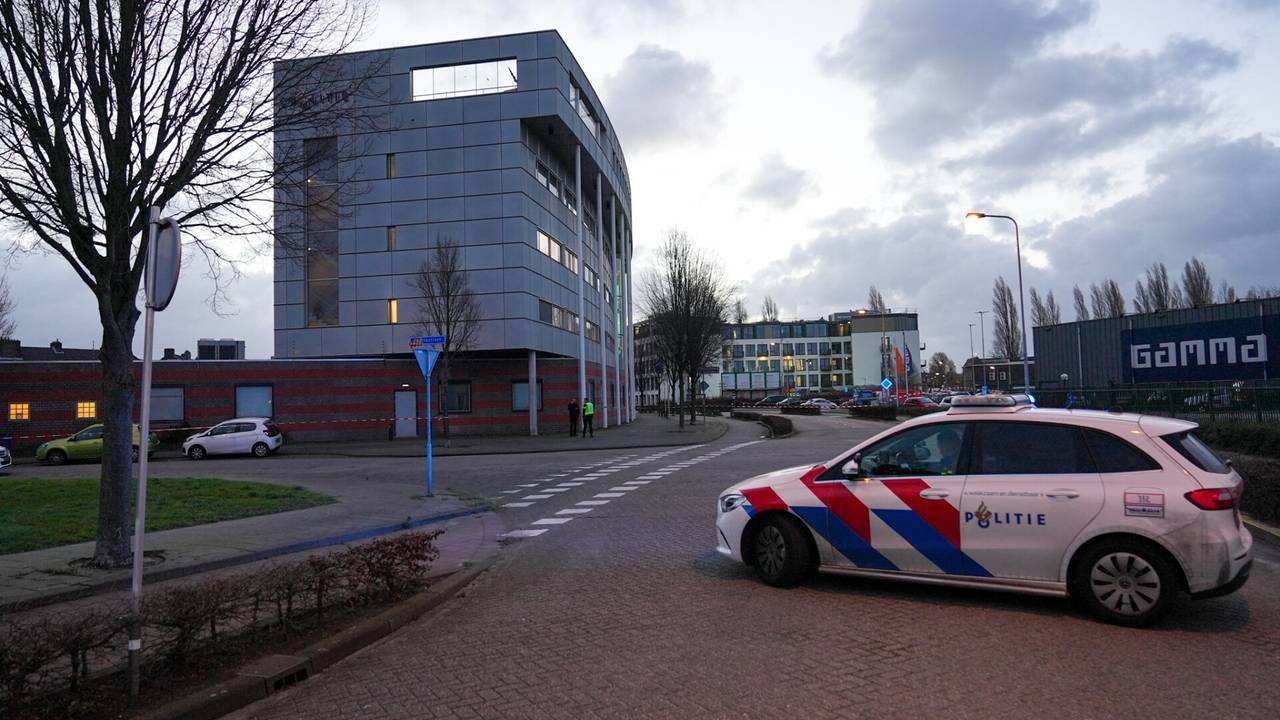Due to the storm “Ylenia”, Deutsche Bahn has stopped long-distance traffic in several federal states. In Lower Saxony, Bremen, Hamburg, Schleswig-Holstein, Mecklenburg-Western Pomerania, Berlin and Brandenburg, there are no long-distance trains, as the company announced in the morning. There are also effects in other federal states.
The storm depression has in Lower Saxony and Bremen triggered numerous fire brigade operations. Most of the alarms on Thursday night were initially about trees that had fallen or were threatened with falling, as the responsible control centers reported. On the federal highway 70 near Westoverledingen (Leer district), a truck driver was no longer able to brake in time and drove into a fallen tree. The man was not injured, a police spokesman said.
Fallen trees also caused delays in rail traffic. However, the extent was initially limited. Between Bremen and Hamburg a tree fell onto the tracks near Buchholz (Nordheide). An ICE therefore had to be diverted, as a railway spokesman said.
The flood levels on the North Sea coast of Lower Saxony were partly lower than expected during the night. Unlike for Schleswig-Holstein and Hamburg, the Federal Maritime and Hydrographic Agency (BSH) had not warned of a storm surge here either.
However, the risk of storm tide for the next few days is not quite over yet: according to the current situation, the BSH expects significantly higher water levels in the night from Friday to Saturday. The next hurricane – called “Zeynep” – is expected to come from the British Isles on Friday.
State of emergency declared in Berlin
The fire department Berlin declared a state of emergency early Thursday morning. “The storm has also reached us,” said a spokesman for the Berlin fire brigade. Since 2 a.m. there has been a sharp increase in weather-related operations. Around 2.30 a.m. it was decided to declare a state of emergency. Several volunteer fire brigades were called into service to support the professional fire brigade.
According to the spokesman, the Berlin fire brigade currently has to deploy 40 to 50 missions. These are mainly fallen trees and loose roof tiles or similar building damage. In Lichterfelde, for example, three trees fell on several parked cars and a light pole was also carried away. There were initially no reports of injuries from Berlin.
In Schleswig Holstein The storm triggered many firefighting operations. However, there was no major damage in the first half of the night, as fire brigades and police control centers reported early Thursday morning. “We have counted 47 missions since the afternoon,” said a spokesman for the Kiel fire department. Among them are mainly trees that have been toppled by the wind.
According to the control center responsible for Elmshorn, Heide, Itzehoe, Pinneberg and Bad Segeberg, they counted around 40 operations. According to a spokeswoman, there were several bus stops damaged by the storm in the Flensburg area. There were also several storm-related operations in the south of the country, said a spokesman for the responsible control center.
Train commuters must expect delays
Train commuters have to be prepared for delays in the morning: Deutsche Bahn announced on Twitter that there were delays on several regional lines due to fallen trees and other storm damage. The routes Kiel – Lübeck, Kiel – Eckernförde and Husum – St. Peter-Ording were affected. The railway set up replacement bus services.
In North Rhine-Westphalia According to Deutsche Bahn, trees blocked isolated branch lines in the Dortmund area. The Dortmund-Münster connection was temporarily affected. Deutsche Bahn announced that goodwill regulations would apply to long-distance tickets already purchased from Thursday to Friday. Use over several days or free cancellations are possible. Read more about the rights of travelers in weather chaos here. In some regions in the north, the first train connections have been cancelled.
In Paderborn, a photovoltaic system blown off the roof caused damage of around 30,000 euros. Parts of the system hit a parked car, said a spokesman for the Paderborn police. The fire department secured the facility.
For the approximately 2.5 million schoolchildren in NRW, classes are canceled this Thursday due to the storm warnings. The decree that makes this nationwide decision possible was drawn up after the storm “Friederike” in 2018 and has been in force since 2021, as the Ministry of Education announced. Now it is used for the first time.
As in North Rhine-Westphalia, schoolchildren in several regions of Lower Saxony or Bavaria are allowed to stay at home on Thursday because of the weather hazards, and other federal states also reacted with appropriate caution on Wednesday.
Wind speeds of up to 152 kilometers per hour on the Brocken
On the exposed lying chunks in the resin According to the German Weather Service, average wind speeds of 120 kilometers per hour were measured between 00.30 and 1.00 a.m. The peak wind during this period was 152 kilometers per hour.
In other parts of Germany, too, there were hurricane gusts and hurricane-like gusts in exposed locations such as mountain peaks: In the above-mentioned period, wind speeds of an average of 87 km/h were measured on the Feldberg in the Black Forest, with peaks of 125 km/h. There were heavy gusts of wind, for example, at Cape Arkona on Rügen (77 km/h, 105 km/h peak) and at the Kiel lighthouse (79 km/h, 101 km/h peak).
From Thursday afternoon the wind will drop from low Ylenia according to the DWD, slowly. However, the breather should only be brief. The next hurricane low will already be on Friday afternoon – Zeynep called – expected coming from the British Isles. According to the DWD, the northern half of Germany in particular will probably be affected again. But the forecasts are not very clear: “The models still have very different simulations,” said spokesman and meteorologist Andreas Friedrich on Wednesday. The weather situation is very dynamic.
–


